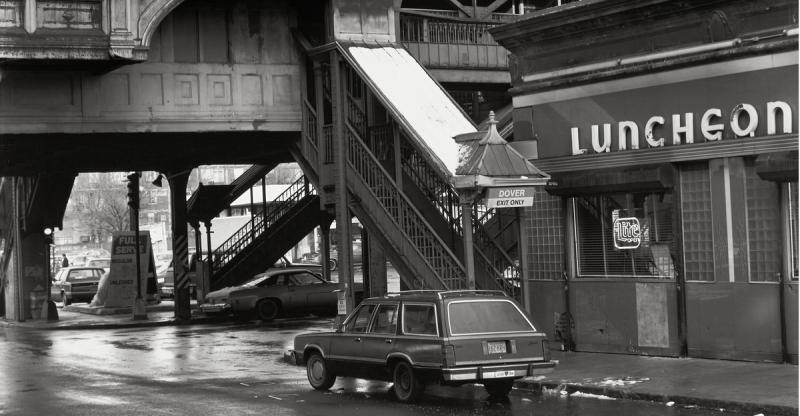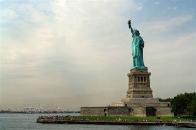Photos of a Bygone Boston
By: Eric Moskowitz (The Atlantic)



In the 1980s, the photographer Jack Lueders-Booth captured life along the city's Orange Line.
By Eric MoskowitzPhotographs by Jack Lueders-Booth October 8, 2022Share
Since leaving the insurance business for photography in 1970, Jack Lueders-Booth has used light, handheld cameras to capture spontaneous moments among his subjects, whether they are motorcycle racers or women in prison, Tijuana garbage pickers or the denizens of his local corner store. But when he recorded life along a dilapidated elevated-train line in Boston before its 1987 demise, he preferred a prewar Deardorff "view camera"—think rosewood body, accordion-style bellows, and tripod—so big and heavy, he needed shoulder pads while lugging it around.
The Washington Street Elevated began life in 1901 as a modern marvel, a neck-craning beauty with stations designed by the architect Alexander Wadsworth Longfellow Jr., a nephew of the poet. By the 1980s, the El—then the southern half of the MBTA's Orange Line—was a screeching symbol of urban neglect, looming over the neighborhoods in its serpentine path.
"I was a middle-aged white guy working in primarily communities of color, and so I did not want to be surreptitious," Lueders-Booth told me.

For 18 months along the El's corridor, he used the conversation-piece camera to compose hundreds of portraits, about 60 of which are featured in The Orange Line , a new monograph, along with more than a dozen streetscapes and interiors. (The book arrives as the Orange Line has again become a symbol of decay: This summer, an aging car caught fire on a bridge, leading one passenger to seek safety by leaping into the Mystic River.)

Lueders-Booth considers these photographs "collaborative" pictures; the subjects held their poses while he studied the view—upside-down and reversed on a ground-glass pane—and fiddled with knobs before slotting in an 8-by-10 sheet of film and emerging from beneath a dark cloth to wield the shutter-release cable.

The result is a candor that can be elusive in candid snapshots. Intimate details are etched onto the 80-square-inch negatives: the striated ribs of a slender boy working on a car with his older brother; the cobbled parts of a bike shared by young siblings; the glance—skeptical and wary—of a woman in the background standing beneath Egleston Station.
Lueders-Booth, 87, still shoots regularly, sometimes using a digital SLR—and now with an arthritic knee. "I think that's going to help me," he said, brandishing a new cane that might do the disarming work the old Deardorff once did. "I'm making a card that introduces me as Jack Booth, Harmless Street Photographer."

This article appears in the November 2022 print edition with the headline "A Bygone Boston."

Tags
Who is online
433 visitors


I do recall once offering to drop off a co-worker at Egleston Station.
As I recall, he said: "Gee, thanks for the thought."